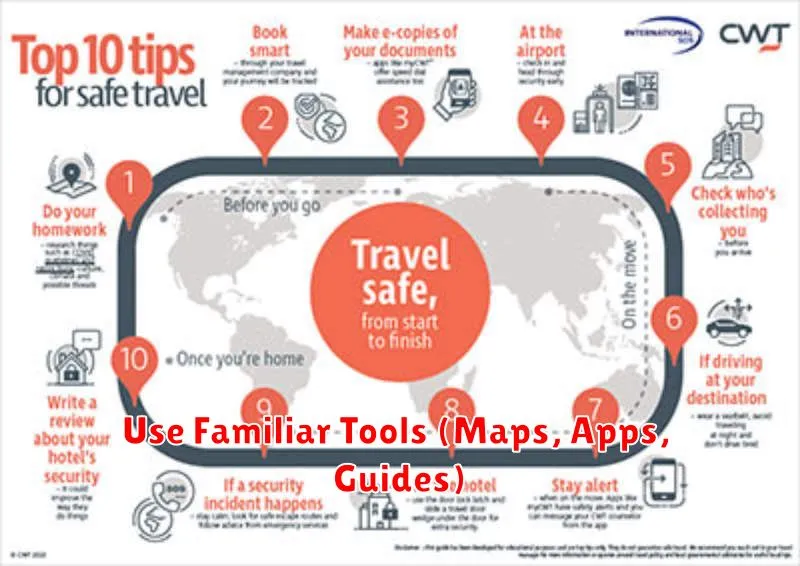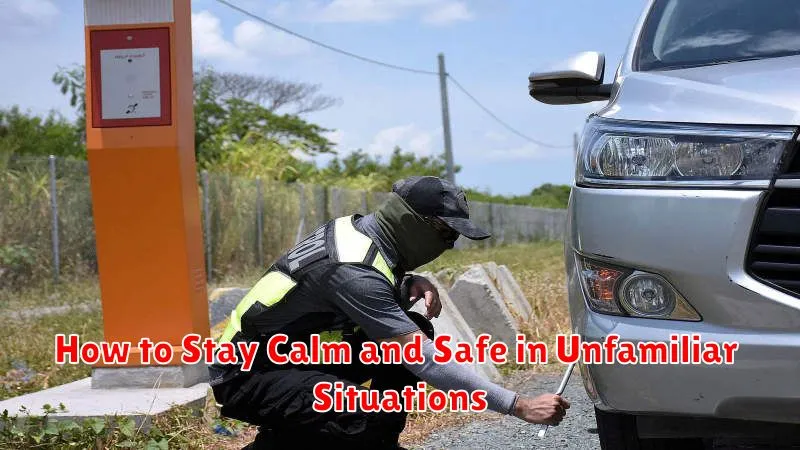Finding yourself in unfamiliar situations can be unsettling, even scary. Whether you’re traveling to a new country, starting a new job, or simply navigating an unknown neighborhood, the feeling of uncertainty can trigger anxiety and fear. It’s crucial to develop coping mechanisms to remain calm and ensure your safety in such circumstances. This article will provide practical strategies and actionable advice on how to stay calm and safe when faced with the unknown. We’ll explore techniques to manage stress, enhance your situational awareness, and build confidence in your ability to navigate unfamiliar situations effectively.
From pre-planning and research to on-the-spot decision-making, we will cover essential steps to help you feel more secure and in control when venturing into the unknown. Learn how to assess risks, trust your intuition, and react appropriately to unexpected events. By mastering these skills, you can transform unfamiliar situations from sources of anxiety into opportunities for growth and enriching experiences. This article offers a comprehensive guide to staying calm and safe, empowering you to embrace the unknown with confidence and resilience.
Stay Present and Control Panic
When confronted with an unfamiliar and potentially unsettling situation, the natural response may be to panic. However, remaining present is crucial for navigating such circumstances safely. Panic clouds judgment and hinders rational thought. Focus on your immediate surroundings and engage your senses. What do you see, hear, and smell? This sensory grounding technique can help anchor you in the present moment and disrupt the escalating cycle of fear.
Controlled breathing is another powerful tool for managing panic. Deep, slow breaths can regulate your heart rate and calm your nervous system. Try inhaling deeply through your nose, holding for a few seconds, and exhaling slowly through your mouth. Repeat this several times until you feel a sense of calm returning. This technique can be practiced discreetly in virtually any situation.
Acknowledge your fear, but don’t let it control you. Remind yourself that fear is a natural response to the unknown. By acknowledging its presence without judgment, you can begin to regain a sense of control. Focus on taking small, manageable steps to address the situation, rather than becoming overwhelmed by the larger picture.
Assess the Situation Objectively
When confronted with an unfamiliar and potentially unsettling situation, the first step towards ensuring your safety and maintaining calm is to assess the situation objectively. Avoid jumping to conclusions or letting fear dictate your actions. Instead, take a moment to pause and observe your surroundings.
Identify any immediate threats. Is there any present danger, such as a physical altercation or a hazardous environment? If so, prioritize your safety and remove yourself from the situation if possible. If immediate escape isn’t feasible, seek a safe location within the environment.
If no immediate threats are present, gather information. What are the specific elements that are making you feel uneasy? Are there unfamiliar people present? Is the environment itself unfamiliar? Pinpointing the source of your discomfort can help you better understand the situation and formulate a plan of action.
Consider the potential risks. While not every unfamiliar situation is dangerous, it’s important to evaluate the possibility of harm. Are there any indicators that the situation could escalate? Trust your instincts. If something feels wrong, it’s often best to err on the side of caution.
Find Help from Locals or Authorities

In unfamiliar and potentially unsettling situations, seeking assistance from locals or authorities can greatly enhance your safety and peace of mind. Shopkeepers, restaurant staff, or hotel employees can offer valuable insights into the area, provide directions, or recommend trustworthy transportation options. They are often familiar with local customs and can advise you on appropriate behavior.
If you require more formal assistance, identifying the local police station or tourist information center can be crucial. These institutions are equipped to handle a range of situations, from lost belongings to emergencies. Don’t hesitate to reach out to them if you feel unsafe or disoriented. Clearly and concisely explain your situation and any pertinent details.
Remember to prioritize your safety. If you feel uncomfortable approaching someone directly, look for uniformed personnel or seek help within established businesses. Trust your instincts and remove yourself from any situation that feels precarious. Having a plan for seeking assistance is an important part of staying calm and safe in unfamiliar environments.
Use Familiar Tools (Maps, Apps, Guides)

In unfamiliar surroundings, leveraging familiar technology can significantly enhance your sense of security and control. Maps, both digital and physical, provide crucial orientation and route planning capabilities. Digital map applications offer real-time location tracking, allowing you to pinpoint your position and navigate efficiently. Physical maps offer a valuable backup should digital resources become unavailable.
Utilize trusted apps designed for safety and travel assistance. These can range from ride-hailing services to translation tools and currency converters. Familiarize yourself with these apps before your trip to maximize their effectiveness in unfamiliar territories. Offline features are particularly valuable when internet access is limited or unavailable.
Consider using travel guides. These resources can offer valuable insights into local customs, transportation options, and potential safety concerns. They can also recommend reliable local services and provide important contact information.
Avoid Escalation and Stay Respectful
In unfamiliar and potentially tense situations, prioritizing de-escalation is crucial for maintaining safety. Avoid escalating the situation by remaining calm and composed, even if provoked. This means controlling your tone of voice, body language, and avoiding aggressive or confrontational behavior.
Respectful communication is key. Acknowledge the other person’s perspective, even if you disagree. Listen actively and try to understand their point of view. Using polite language and demonstrating empathy can often diffuse tension and prevent a situation from worsening. Avoid dismissive or condescending remarks.
Even if you feel threatened, avoid engaging in physical altercations unless absolutely necessary for self-defense. Prioritize your safety by creating distance and seeking assistance from authorities or bystanders if possible.
Remember, staying calm and respectful not only protects your well-being but also contributes to a more peaceful resolution of the situation.
Know Basic Self-Defense Movements
In unfamiliar and potentially dangerous situations, having a basic understanding of self-defense can significantly increase your sense of safety and empower you to react effectively. While comprehensive training is always recommended, knowing a few key moves can make a difference.
Target vulnerable areas: Aiming for an attacker’s eyes, nose, groin, or throat can temporarily incapacitate them, giving you an opportunity to escape. A swift, forceful strike, even if not perfectly executed, can be highly effective.
Utilize everyday objects: Keys, a pen, or even a tightly rolled magazine can be used as improvised weapons. Grip these objects firmly and use them to strike vulnerable areas.
Practice basic blocks and strikes: Familiarize yourself with simple blocking techniques to deflect incoming blows. Learning how to deliver a strong palm strike or knee strike can also be valuable. Remember, the goal is to create an opportunity to disengage and seek safety, not to engage in prolonged combat.
Be aware of your surroundings: Situational awareness is your first line of defense. Pay attention to your environment and try to identify potential escape routes. Avoid distractions like your phone and trust your instincts. If a situation feels unsafe, remove yourself.
Build Mental Confidence Through Preparation
Preparation is a cornerstone of confidence in unfamiliar situations. Knowing you’ve taken steps to anticipate potential challenges significantly reduces anxiety and promotes a sense of control.
Research your destination. If traveling to a new place, learn about local customs, transportation options, and potential safety concerns. Understanding the environment empowers you to navigate it more effectively.
Pack strategically. Having essential items readily available contributes to a sense of preparedness. This might include a first-aid kit, necessary medications, a charged phone, and appropriate clothing for the climate.
Develop a basic communication plan. Inform someone trustworthy of your itinerary and expected return. Establish check-in points to reassure both yourself and your contact person. Consider learning basic phrases in the local language if traveling internationally.
Visualize successful outcomes. Mentally rehearsing positive scenarios can bolster confidence and reduce apprehension about the unknown. This technique allows you to preemptively address potential challenges and develop coping strategies.

